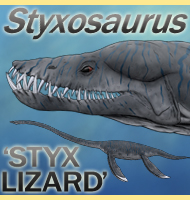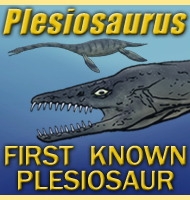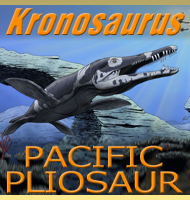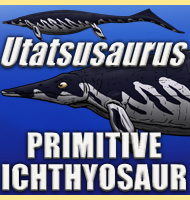

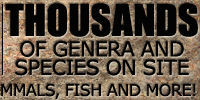
Dravidosaurus
Name:
Dravidosaurus
(Dravidanadu lizard).
Phonetic: Dray-vid-o-sor-us.
Named By: P. Yadagiri & K. Ayyasami
- 1979.
Classification: Chordata, Reptilia,
Sauropterygia, Pistosauria, Plesiosauria.
Species: D. blanfordi
(type).
Diet: Piscivore.
Size: Uncertain due to lack of remains, but possibly
around 3 meters long.
Known locations: India.
Time period: Coniacian of the Cretaceous.
Fossil representation: Partial remains.
When first named in 1979, Dravidosaurus was described as a stegosaurid dinosaur, and given that the holotype was in a Coniacian of the late Cretaceous aged deposit, possibly the last stegosaur to exist. However, this claim seems to have been made prematurely, as in 1991 a palaeontologist named Sanker Chatterjee visited the site fossil site and identified the remains as being those of not a stegosaur, or even a dinosaur, but instead a partial pelvis and hind limb of a plesiosaur. Chatterjee followed this up in a 1996 paper co-authored with Rudra, and in 2011 another study, this time by Wilson, Barrett and Carrano confirmed that the holotype remains of Dravidosaurus are indeed from a plesiosaur.
Further reading
- A new stegosaurian dinosaur from Upper Cretaceous sediments of
south India. - Journal of the Geologicial Society of India
20(11):521-530. - P. Yadagiri & K. Ayyasami -
1979.
- KT events in India: impact, rifting, volcanism and dinosaur
extinction, by S. Chatterjee & D. K. Rudra. In,
Proceedings of the Gondwanan Dinosaur Symposium, Brisbane, Memoirs
of the Queensland Museum, 39(3). - Novas & Molnar
(eds) - 1996.
- An associated partial skeleton of Jainosaurus cf.
septentrionalis (Dinosauria: Sauropoda) from the Late Cretaceous
of Chhota Simla, central India. - Palaeontology, 54(5),
981-998. - J. A. Wilson, P. M. Barrett & M.
T. Carrano - 2011.
----------------------------------------------------------------------------
Random favourites
 |
 |
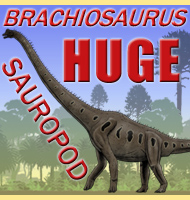 |
